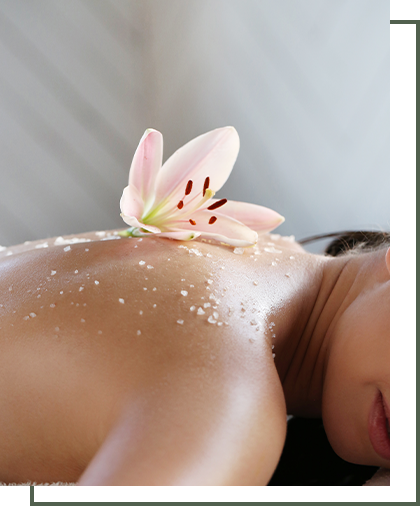FAQs

Frequently Asked Questions
When tiny, sterile acupuncture needles are inserted into the skin and muscle a cascade of biochemical responses occur such as enhanced endorphin production which activates the body's opiate receptors, causing an analgesic (pain relieving) effect.
Acupuncture also dilates blood vessels and softens muscle spasms which then allows increased blood flow into previously starved muscle tissue, resulting in oxygen and nutrient rich tissues to assist healing.
Neuromodulators are opiod peptides, and four of them have been confirmed to release during an acupuncture treatment. (Han J, Terenius L. Neurochemical basis of acupuncture analgesia. Annual review of Pharmacology and Toxicology, 1982;22:193-220.)
One of these opiod peptides, beta-endorphin, plays an important role in acupuncture analgesia, or pain relief. Endorphins, which are substances produced in the brain, block the sensation of pain. Studies have shown that beta-endorphin is released in patients while receiving acupuncture, whereas the control group (participants who did not receive acupuncture), did not experience an increase in this neuromodulator. (Clement-Jones V, et al. Increased betaendorphin but not met-enkeph-alin levels in human cerebrospinal fluid after acupuncture for recurrent pain. Lancet, 1980 Nov 1;2(8201):946-949.)
What all of this means is that Acupuncture may decrease pain, and may assist with the management of internal medical conditions such as Headaches, High Blood Pressure, Gastrointestinal conditions, PMS, and much more.
When acupuncture is administered by a skilled Registered Acupuncturist, it is definitely a safe medical procedure with minimal potential side effects. Occasionally slight bleeding or bruising may occur, as with any needle penetration of skin, and this typically resolves quickly and does not cause discomfort in most cases.
Sterile, single use only needles are used at Cowichan Valley Acupuncture, and patient safety is our number one priority.
The majority of people who receive Acupuncture treatments experience a positive therapeutic response including pain reduction or improvement with an internal medical condition being treated.
Chronic conditions typically require more than a single treatment for significant improvement to occur.
If a patient has received several treatments and it is evident that there is minimal to no improvement of condition, an alternative form of therapy will be recommended. While this is rare, it is important to remember that not every medical procedure will work for everyone, 100% of the time.
Typically most patients experience little to no discomfort or pain when tiny Acupuncture needles are gently inserted into the skin and muscle. Occasionally, a slight sharp sensation may be observed by the patient upon insertion of the needle, and this quickly dissipates in most cases. If any lingering discomfort continues, the needle is withdrawn and typically the discomfort ceases.
It is recommended to minimize bodily movement throughout an Acupuncture treatment to avoid discomfort in the area where the needles are inserted. When muscles surrounding an inserted needle are activated, an uncomfortable sensation may be observed by the patient. In the majority of cases, when the movement stops, the discomfort also ceases.
It is advised to arrive for an Acupuncture treatment following a light meal or snack, and to be well hydrated. While avoiding a heavy meal and large amounts of liquids prior to a session, it is important to have consumed a light meal or snack and some water 1 to 3 hours prior to arriving for your treatment.
Typically, the needles remain in place for approximately 20 - 30 minutes. During this time most patients experience a pleasant sense of relaxation, and many people actually fall sleep.
Cupping therapy is used for some patients, depending upon the condition being treated. Following a detailed evaluation, it will be determined if cupping is appropriate for you.
Most people feel very relaxed following an Acupuncture treatment, although some individuals feel energized afterwards.
If receiving a treatment for a pain related condition, many patients will report an immediate reduction in pain following a treatment. For others, the pain-relieving quality of the treatment may take several hours to an entire day to be noticed by the patient.
In some cases chronic pain conditions may require several treatments before a noticeable decrease in pain is observed.
In very rare occasions, a pain related condition may temporarily flare up following a treatment, causing increased discomfort for several hours or an entire day following an Acupuncture treatment.
Typically, once this temporary discomfort subsides, most patients experience pain relief for the condition being treated.
While this response is not typical and occurs in approximately only 5% of patients, it does constitute a potential side effect of Acupuncture treatments that patients should be aware of.
It is advised to drink water and to avoid excessive exercise following an acupuncture treatment. Other than these recommendations there are no special or complicated suggestions to follow.
Most extended Health Care Insurance plans in British Columbia provide coverage for Acupuncture when it is administered by a Registered Acupuncturist. Health Care plans vary, and it is important to be aware of the details of your Health Care Insurance plan.
Cowichan Valley Acupuncture and Purely Wellness Health and Wellness Centre will direct bill to Pacific Blue Cross.
If you have an alternate Extended Health Insurance Plan you will be provided with a receipt upon payment for Acupuncture Services. You may then forward this receipt to your Health Insurance Plan for reimbursement.
Yes, if you have a valid claim with ICBC, we will direct bill to ICBC for the portion that they cover. You will be responsible for any portion not covered by ICBC.

